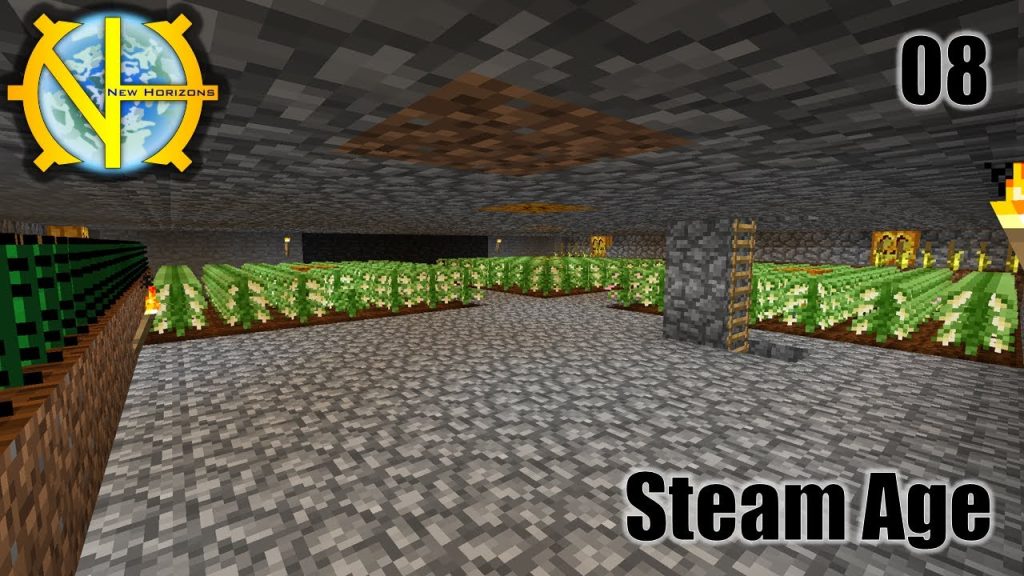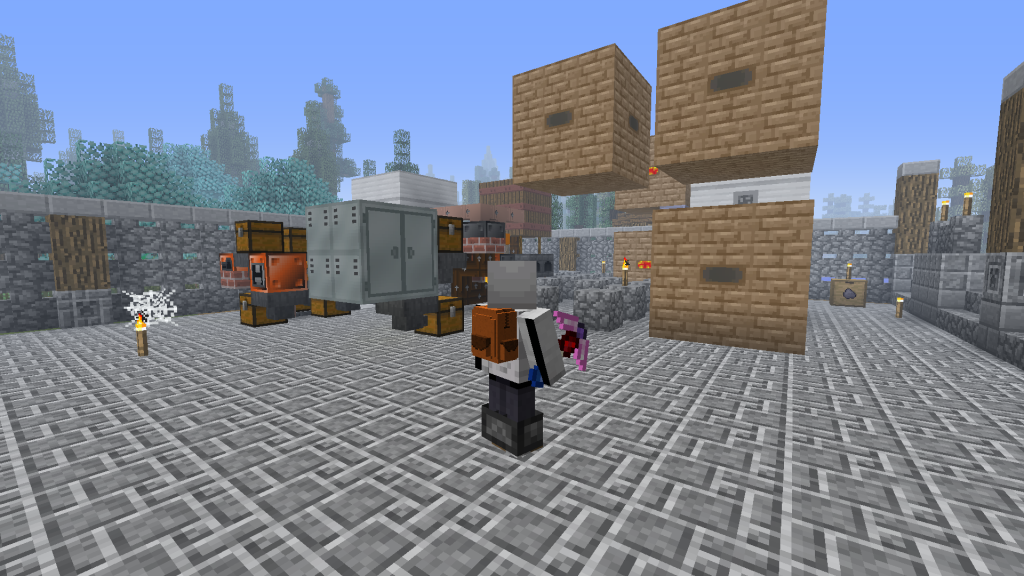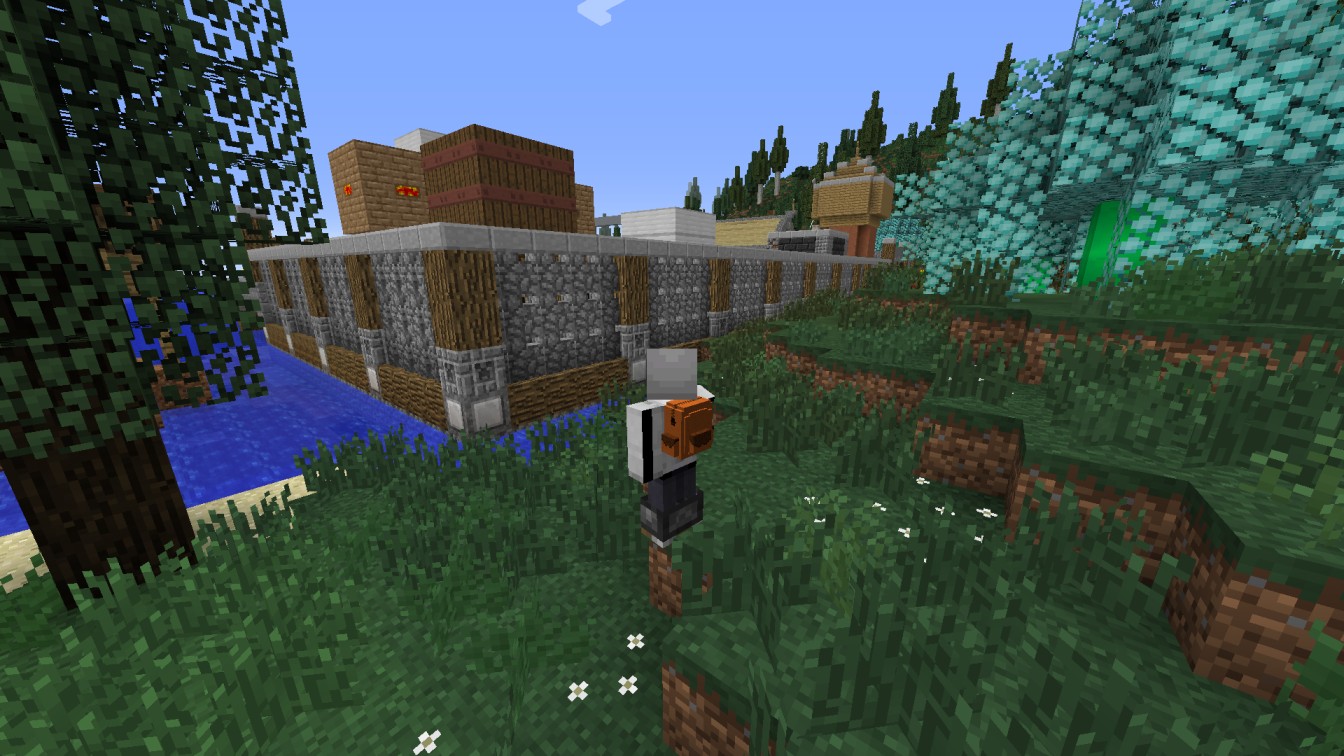GregTech is widely regarded as one of the most intricate and rewarding mods in Minecraft.
It offers a highly technical gameplay experience, split into progressive ages that gradually allow players to unlock more advanced tools, machines, and capabilities.
This guide takes you through the Steam Age, the first major phase in GregTech, and provides step-by-step instructions on how to progress through this stage efficiently.
Getting Started: Finding Ore Deposits in GregTech

To begin advancing in GregTech, the first thing you need to do is find ores. You can’t make machines or progress through the different ages without them.
In GregTech, ore deposits are found in a different way than in regular Minecraft. Instead of being scattered around randomly, they are found in tight groups within specific chunks.
How to Locate Ore Deposits?
- Turn On Chunk Borders: To find ore deposits accurately, hit F3 and G to turn on chunk borders. This will show you the edges of each chunk.
- Ore Deposit Patterns: Ore deposits appear every 3 chunks in a set pattern. The hard part is finding the first deposit. After you find one, move three chunks in a straight line to find more deposits.
- Searching for Ore Deposits: Go to the middle of a chunk, dig straight down, and look for ores. Using tools that can mine 3×3 areas (like hammers) will make this go faster and be more efficient.
- Identifying Ore Deposits: When you find a GregTech ore—like rock salt, bodumine, or lepidolite—you’ve found a deposit. These deposits have dense clusters of related minerals. For instance, a cassiterite deposit often has tin and cassiterite ore.
Making Steam: The Basics of the Steam Age
The Steam Age is all about machines powered by steam. These machines are necessary for making tools, processing materials, and moving on to the next age.
To create power, you’ll begin by making low-pressure steam boilers before moving on to high-pressure ones.
Kinds of Low-Pressure Steam Boilers
- Solid Boiler: Burns solid fuels like coal to make steam.
- Liquid Boiler: Burns liquid fuels, such as lava.
- Solar Boiler: Uses the power of the sun to heat up and make steam.
Making Your First Steam Boiler:
- Crafting Bronze Plates: Bronze plates are a key part in making steam boilers. To make these, hammer copper and tin ingots together.
- Putting Together Tools: GregTech needs several tools, including an iron screwdriver, file, saw, hammer, and wrench. These tools help you work with and craft items like plates, pipes, and blocks.
- Making Steam: To run boilers, give them fuel (coal or lava) and water. Important: Always put in water before heating the boiler. Putting water into a heated boiler will make it blow up.
Fluid Systems: Bronze Pipes and Water Control
Handling fluids like water and steam is very important in GregTech. This means making bronze fluid pipes and setting up systems to pipe resources well.
Tips for Using Bronze Pipes
- Manual Connections: Bronze pipes need to be connected by hand using a wrench. Right-click pipe segments to connect or disconnect them. This feature stops pipes from overlapping when you don’t want them to, but can feel tricky at first.
- Bronze Drum: Bronze drums or wooden barrels are simple ways to store fluids. Allow fluid to drain by using a screwdriver on the drum—this lets water flow into connected pipes on its own.
Important Steam Machines
The Steam Age adds several key machines powered by steam. These help automate processes while making better use of materials:
- Steam Forge Hammer: Allows crafting plates well, using fewer ingots than the manual hammer method. Example: Three ingots make two plates (instead of four ingots by hand).
- Steam Furnace: Works better than basic furnaces and doesn’t need to burn extra coal.
- Rock Crusher: Processes cobblestone, gravel, or ores into refined products. Steam-powered crushing gives early ore-doubling chances. Tip: Make sure to place exhaust vents right to keep the machine from getting clogged.
- Merator: Helpful for crafting items like seeds from melon slices or refining ores into crushed versions.
- Compressor: Compresses materials into blocks, making storage smaller or allowing advanced recipes.
- Alloy Smelter: Lets you craft alloys such as bronze automatically from copper and tin dust or ingots.
- Steam Extractor: Extracts specific parts and materials, such as rubber, for further crafting.
Steam Machine Maintenance:
- All steam machines require exhaust vents for proper functioning. Use a wrench to designate sides for venting steam. Blocked exhaust vents halt machine function, so ensure these vents are placed correctly.
Advancing Materials: The Primitive Blast Furnace
Steel is a crucial step for moving beyond the Steam Age. To craft steel, you’ll need a Primitive Blast Furnace, a multiblock structure made of fire bricks.
Building the Primitive Blast Furnace
1). Gather Components:
- Fire bricks are made by combining fire clay dust (crafted from clay and brick dust) into compressed fire clay.
- Use tools like the hammer and mortar to create necessary components.
2). Construct the Furnace:
- Build a 3×3 structure that extends upward by four layers. Leave the interior hollow.
3). Prepare Materials:
- Place coal (fuel) in the bottom slot and iron in the top two slots. The furnace converts them into steel ingots.
Benefits:
- Steel allows crafting durable tools and high-pressure steam boilers, which more than double steam production compared to low-pressure variants.
Automating Water Collection: Primitive Pump

The primitive pump is a multiblock structure used for generating unlimited water sources. It’s essential for streamlining steam production without manually refilling barrels or drums.
1). Crafting Components:
- Use treated wood frames (crafted with creosote oil) and pump hatches as structural components.
2). Assembly:
- Surround the pump with water sources where the primitive pump block itself sits directly above water.
3). Fluid Output:
- Attach bronze fluid pipes to shift water to storage or boilers automatically.
Creosote Production: Coke Oven
Creosote is central to crafting treated wood products, used in advanced machines like pumps and water storage systems.
Building the Coke Oven
- Multiblock Structure: Construct using compressed coke clay bricks and leave the interior hollow.
- Fuel Processing: Place coal in the oven to produce coal coke (a better fuel) alongside creosote oil.
Preparing for the Low Voltage (LV) Age: Basic Electronic Circuit
The final task before transitioning into the Low Voltage (LV) stage is crafting Basic Electronic Circuits. This item unlocks electricity-powered machines, freeing you from reliance on steam.
Steps to Craft a Basic Electronic Circuit
- Copper Wire: Use wire cutters to slice copper plates into wires.
- Resin Printed Circuit Boards:
- Harvest sticky resin by cutting down rubber log trees found in taiga biomes.
- Process resin with wood planks to generate resin circuit boards.
- Vacuum Tubes:
- Combine glass dust, molds, and raw materials in the alloy smelter.
- Red Alloy Cables:
- Produce red alloy ingots by combining copper and redstone, then mold these into wires.
- Bulk Crafting:
- Resist making circuits piecemeal. Bulk crafting saves significant time and effort.
Final Thoughts
The Steam Age in GregTech is an complex phase that serves as the foundation for the mod’s complexity. Therefore, you are encouraged to explore automation strategies early on to minimize repetitive crafting and resource management frustrations.
Key Points
- The Steam Age is a crucial stage in GregTech that lays the groundwork for the mod’s intricate gameplay.
- Automation is highly recommended during this phase to reduce the tedium of manual crafting and resource management.
- Mastering the Steam Age provides players with the tools and knowledge needed to excel in more advanced stages like Low Voltage and beyond.
While the Steam Age in GregTech may seem intimidating at first, accepting its complexity and focusing on automation will set you up for success in this Minecraft.




